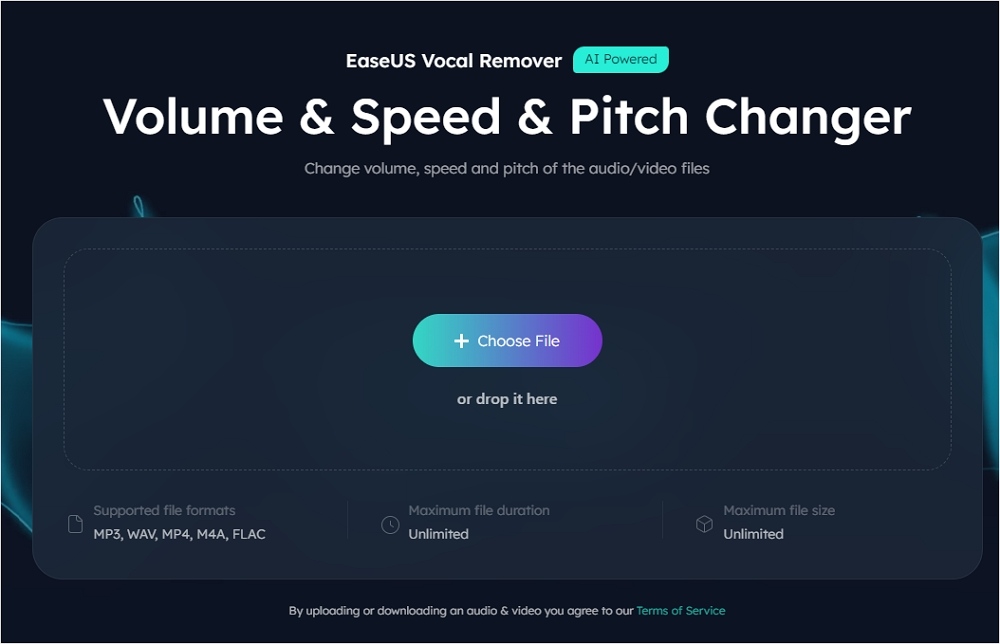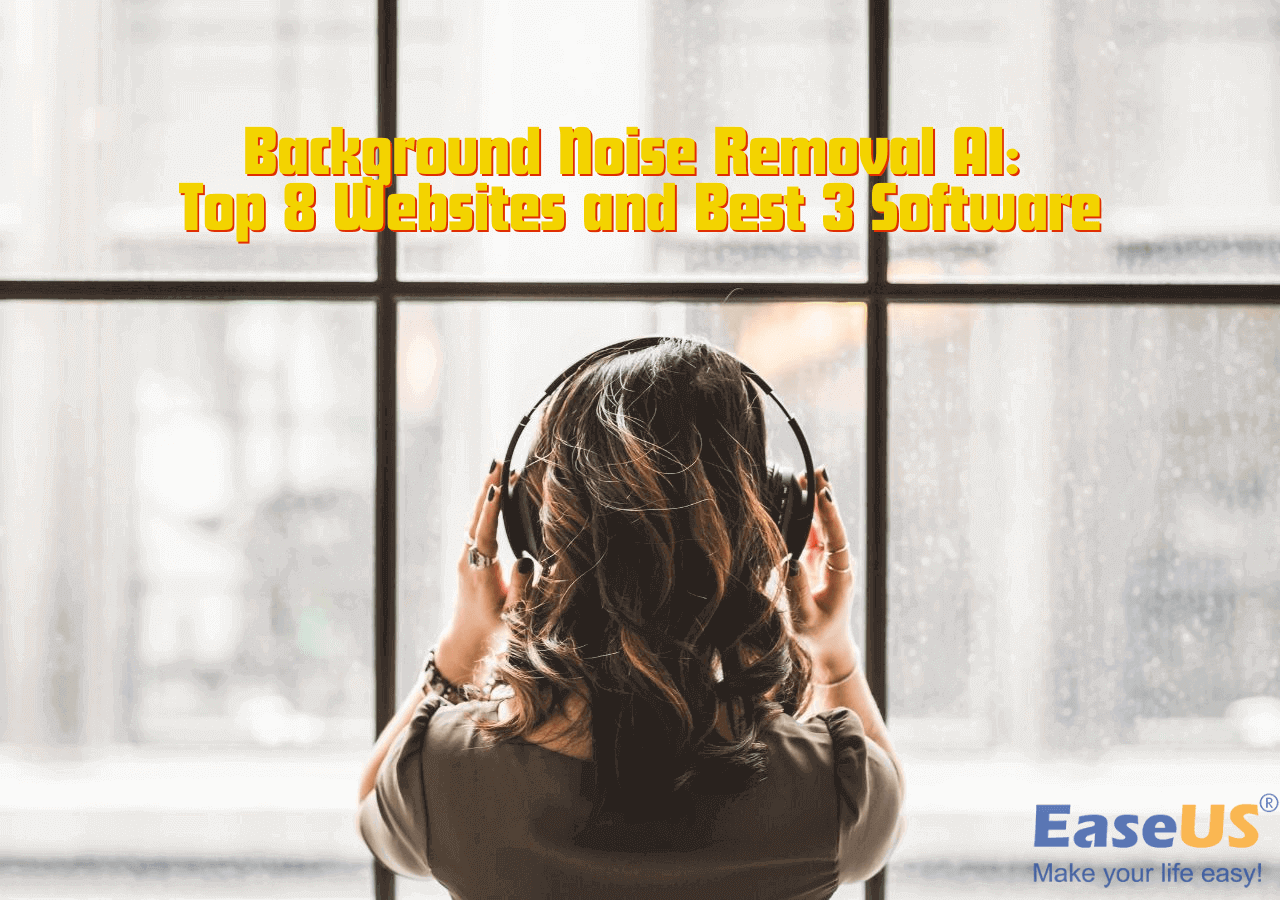-
![]()
Sofia Albert
Sofia has been involved with tech ever since she joined the EaseUS editor team in March 2011 and now she is a senior website editor. She is good at solving various issues, such as video downloading and recording.…Read full bio -
![]()
Melissa Lee
Melissa Lee is a sophisticated editor for EaseUS in tech blog writing. She is proficient in writing articles related to screen recording, voice changing, and PDF file editing. She also wrote blogs about data recovery, disk partitioning, data backup, etc.…Read full bio -
Jean has been working as a professional website editor for quite a long time. Her articles focus on topics of computer backup, data security tips, data recovery, and disk partitioning. Also, she writes many guides and tutorials on PC hardware & software troubleshooting. She keeps two lovely parrots and likes making vlogs of pets. With experience in video recording and video editing, she starts writing blogs on multimedia topics now.…Read full bio
-
![]()
Gorilla
Gorilla joined EaseUS in 2022. As a smartphone lover, she stays on top of Android unlocking skills and iOS troubleshooting tips. In addition, she also devotes herself to data recovery and transfer issues.…Read full bio -
![]()
Rel
Rel has always maintained a strong curiosity about the computer field and is committed to the research of the most efficient and practical computer problem solutions.…Read full bio -
![]()
Dawn Tang
Dawn Tang is a seasoned professional with a year-long record of crafting informative Backup & Recovery articles. Currently, she's channeling her expertise into the world of video editing software, embodying adaptability and a passion for mastering new digital domains.…Read full bio -
![]()
Sasha
Sasha is a girl who enjoys researching various electronic products and is dedicated to helping readers solve a wide range of technology-related issues. On EaseUS, she excels at providing readers with concise solutions in audio and video editing.…Read full bio
Content
0 Views |
0 min read
Encountering low volume on an iPhone can disrupt various aspects of our daily lives. Whether it's struggling to hear phone calls clearly or enjoying multimedia content, the volume-related issues are frustrating. So someone asked for help online and described that:
My iPhone speaker volume is very low
Many users are asking similar questions on Apple Support. We all know that resolving these issues can significantly enhance the functionality of your device. By addressing the root causes behind low-volume occurrences, users can unlock the full potential of their iPhones. This article lists the common reasons why volume is low on my iPhone. Here, we will mention the effective solutions to all possible causes. With detailed steps, you can troubleshoot the issue easily.
Common Causes for Volume Low on iPhone
The iPhones are known for their advanced features. However, even the most reliable devices can encounter issues. One common issue is the low volume of iPhones. Here are the factors contributing to this issue:
File Issues: One potential cause of low volume on iPhones is in the files themselves. Files encoded with a low bitrate may result in diminished audio quality and volume. Corrupted or damaged files during transfer or download can also show irregular behavior. Moreover, variations in volume levels across different media files can lead to differences in overall volume output.
Setting Issues: Misconfigured settings on the iPhone can also contribute to a subdued audio experience. If the iPhone maximum volume limit is set too low, it can restrict the device's overall volume. Enabling Mono Audio can sometimes result in a perceived reduction in volume. Connected Bluetooth devices or AirPlay-enabled speakers can also override the iPhone's volume settings.
Software Issues: Software issues within the iPhone's operating system can also impact volume performance. Software Bugs can affect various functionalities, including audio output. Resource-intensive background processes or malfunctioning apps can monopolize system resources.
Device Issues: Hardware issues within the iPhone can cause low volume levels. Physical damage to the iPhone's built-in speaker or speaker components can impair volume output. If using wired headphones or external speakers, issues with the iPhone's audio jack or connector may impede proper audio transmission. Manufacturing defects or component failures may affect audio performance.
Quick Fix for Volume Low on iPhone:
Solve File Issues
The majority of volume-low issues are due to issues in the file. One of the best ways to enhance audio in a file is by using an efficient tool. One effective solution is EaseUS Vocal Remover's newest feature: the volume booster. This innovative tool offers a swift and efficient way to enhance audio output and change the pitch of a song.

EaseUS Online Vocal Remover is a free online audio processing tool for volume enhancement. With its user-friendly interface and robust features, it serves as a valuable resource for individuals seeking to optimize their audio experience. The volume booster feature further enhances its utility, offering a quick and convenient solution for low-volume issues. With its primary function to extract instrumentals from a song, you can extract and use multiple audio components.
🌟The volume booster feature in EaseUS Vocal Remover offers key features:
- File Compatibility: It supports a wide range of file formats, including MP3, WAV, M4A, FLAC, and MP4. You can also remove vocals from YouTube link.
- Adjustable Volume Levels: With the ability to decrease or increase volume from 0 to 3 times the original level. This customizable functionality offers flexibility and control.
- Pitch and Volume Modification: Itfacilitates pitch and volume modification. Users can refine audio characteristics with precision.
- Key and BPM Detection: It excels in identifying key and BPM information for songs. This supplementary feature aids in music analysis and organization.
- File Size Limitations: The maximum file limit of 150MB within 20 minutes strikes a balance between usability and efficiency, accommodating most audio processing needs.
Get access to EaseUS Vocal Remover from here!
Solve Setting Issues
1: Check Sounds & Haptics
If you're encountering consistently low volume on your iPhone, the issue might be within your device's internal settings. You can access the "Sounds & Haptics" settings to inspect and modify the sound and vibration configurations for various alerts. Here's how you can check and adjust these settings to remove silent mode:
Step 1. Open your iPhone Settings.
Step 2. Go to "Sounds & Haptics."
Step 3. Set the "Ringer and Alerts" slider to its maximum level.
Step 4. To prevent accidental volume adjustments, toggle off the "Change with Buttons" option.

Step 5. Scroll through the list of alert tones and verify the volume levels for each. If a tone or alerts slider is dimmed, consider selecting a different tone.
2: Turn Off Noise Cancellation
low speaker volume during calls can be due to the iPhone's noise cancellation. Disabling this feature can help restore normal volume levels during calls. Here's how you can turn off noise cancellation:
Step 1. Open your iPhone Settings.
Step 2. Select the "Accessibility" option.
Step 3. Under the "Hearing" section, select "Audio/Visual."
Step 4. Go to "Noise Cancellation" and disable the feature.

Step 5. Place a call and test the iPhone speaker volume.
3: Toggle On/Off Bluetooth
Low headphone volume on your iPhone can sometimes be due to issues with Bluetooth connectivity. The issue could arise while using wireless headphones or connected audio devices. By turning Bluetooth off and on, you can solve low-volume issues on your iPhone. Follow these steps to troubleshoot Bluetooth-related volume issues:
Step 1. Open the "Bluetooth" Settings.
Step 2. If Bluetooth is currently enabled, turn it off and disconnect any paired devices.

Step 3. Remove any previously paired devices.
Step 4. Turn on Bluetooth and reconnect your headphones or audio device.
Step 5. After reconnecting your device, test the headphone volume to see if the issue has been resolved.
Solve Software Issues
Outdated iOS versions can sometimes cause volume-related issues. Updating your iPhone to the latest iOS version can patch bugs and improve system stability. Follow these steps to check and install iOS updates:
Step 1. Open your iPhone Settings.
Step 2. Select the "General" option from the Settings.
Step 3. Tap on the "Software Update" option within the General menu. Your iPhone will then check for available updates.
Step 4. If a new iOS version is available, tap on "Download and Install."

Step 5. After the update is installed, restart your iPhone. Test the speaker volume in the latest iOS version.
Solve Hardware Issues
To solve low-volume issues on your iPhone stemming from hardware concerns, consider the following steps
1: Check for Loose Connections
If your iPhone's volume issues software still exists, it might be due to a loose connection within the device. Remove all screen protector films or cases from your device. Press the bottom-right corner near the Home button from above and below. Hold it for 20 seconds and release. It will help reposition any loose connectors and restore proper functionality.
2: Inspect for Headphone Mode Stuck
Older iPhones with headphone jacks and newer models with dirt or debris in the charging port can mistakenly register as being in headphone mode. In such situations, reception could be the issue, and you need to check the speaker's opening. This can result in audio playing through a non-existent connection, leading to low-volume issues. Use the side buttons to adjust the volume and check the screen for indications of an active headphone connection. Additionally, inspect the headphone jack and clean the speaker using a small soft-bristled brush.
To Conclude
Encountering low-volume issues can affect communication and entertainment. From missed calls to muted alerts, the low volume levels can decrease the overall user experience. However, by identifying volume-related issues, you can solve the issue. You can solve all settings, software, and hardware-related issues from your iPhone settings.
But sometimes, issue is within the file, you'll need a reliable solution. EaseUS Vocal Remover has a volume booster feature to further enhance the audio experience on iPhones. It offers the best solution to solve volume-related issues and ensure an immersive iPhone experience.
FAQs on Why is the Volume Low on My iPhone
If you're experiencing low volume on your iPhone, you might have some confusion about the process. Here are some insights for you.
1. Why does my iPhone sound so low all of a sudden?
If your iPhone's sound has decreased, there could be several reasons. One potential cause might be software glitches or background processes using system resources. Additionally, recent changes to settings or updates to iOS may have inadvertently altered volume configurations. Go to "Settings" > "General" > "Software Update" to install the latest iOS version.
2. Why is my volume so low even though it's all the way up?
There are several reasons why your iPhone's volume remains low despite being set to its maximum level. It's possible that external factors such as noise cancellation settings or Bluetooth connectivity issues are affecting volume output. Additionally, corrupted media files or hardware malfunctions can reduce the volume.
3. How do I make my iPhone volume louder?
To amplify the volume on your iPhone and restore optimal audio output, follow these steps.
Step 1. Ensure that volume settings are maximized both in the "Sounds & Haptics" menu and within individual app settings.
Step 2. Check for and disable noise cancellation features.
Step 3. Reset Bluetooth connections.
Step 4. Update iOS to the latest version.
If you find this article helpful, please SHARE it with your friends on Social Media!




